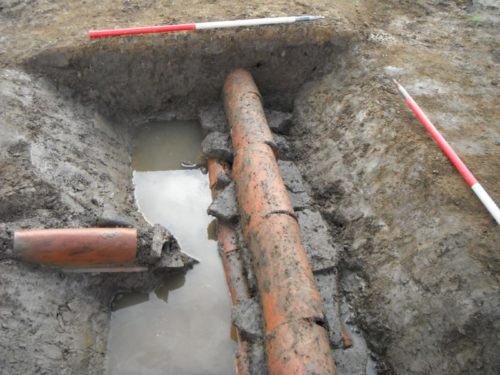The following information is from Ian Suddaby. Ian states –
In the field next to a dilapidated Nissen Hut near Edinburgh, Scotland were rather more interesting field drains. It might be early July but mud is still in abundance.
A very unusual collection drain in a pre-existing ditch has field clearance filled stone drains and 4″ high clay horseshoe drains feeding into it. Usually, the flow from the stone drains just seeps into the larger drains whereas the clay drains physically link with the contemporary main drain system. Here, both flows seep through small stones but it is the collection drain that holds the main interest.
Stone slabs form the base and on them are parallel rows of 5″ high horseshoe drains with a second layer of stone slabs on top. A single row of 6″ diameter horseshoe pipes rests on the second layer of stone slabs.
This isn’t an arrangement I’ve seen before and it’s one with a few problems. As the pipes don’t fit well, all three rows of drains are almost completely blocked with either waterlogged silt or soil and the uneven pressure exerted by the stone slabs has caused almost all of the lower tier of drains to crack or collapse.
This is likely to be another example of agricultural innovation during the Improvements, c.1750-1850. Drainpipe maker is unknown.

.

.

.

.













